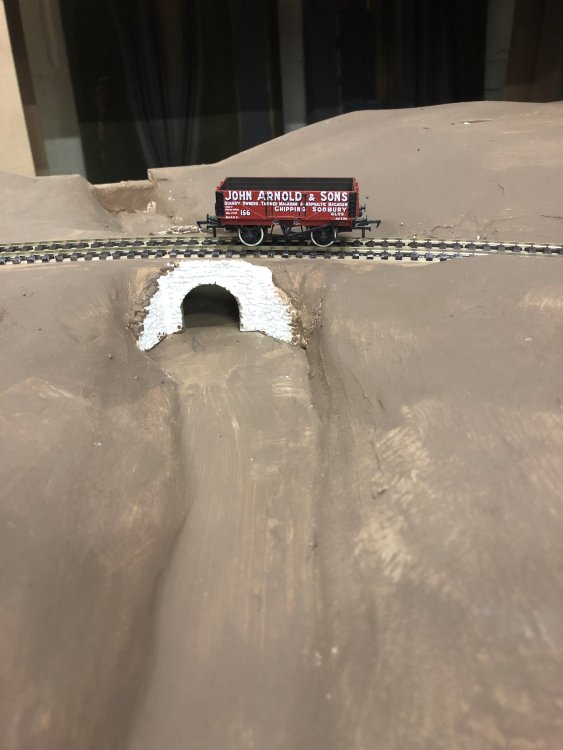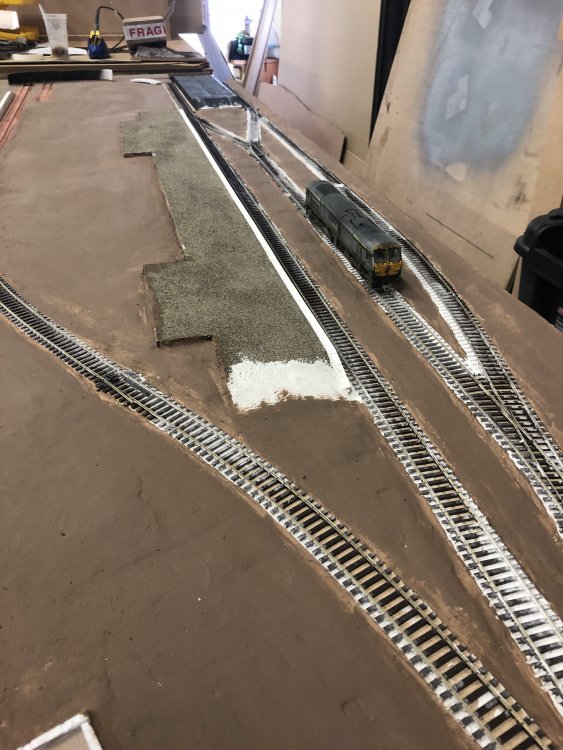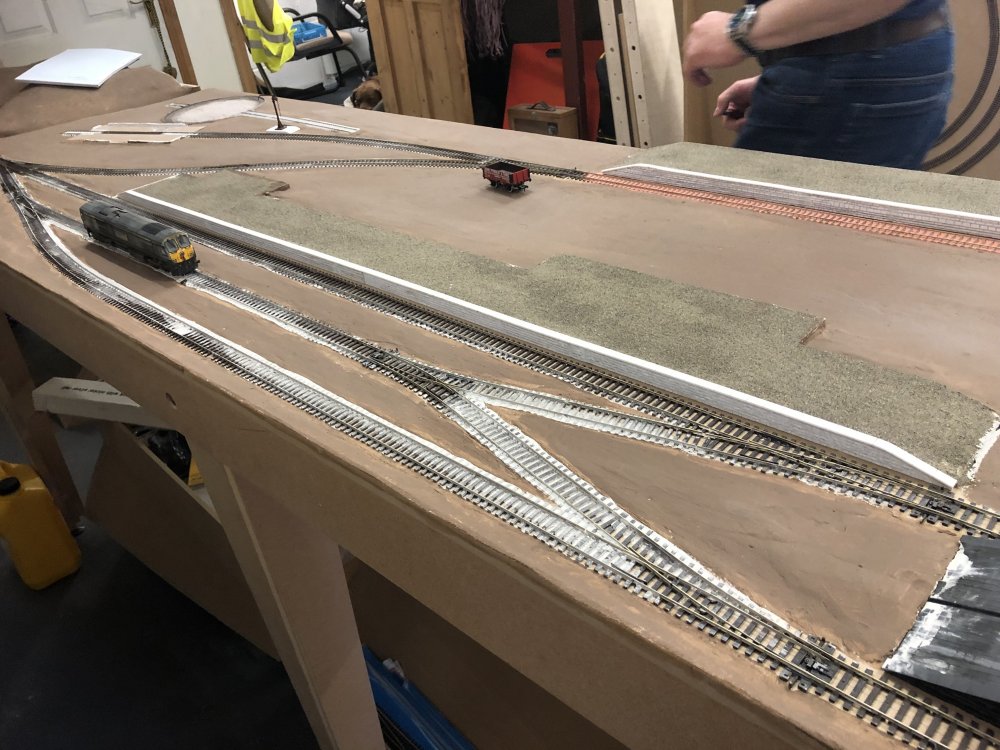-
Posts
15,915 -
Joined
-
Last visited
-
Days Won
394
Content Type
Profiles
Forums
Events
Gallery
Blogs
Community Map
Everything posted by jhb171achill
-
They were all scrapped, other than the few preserved and one or two in Inchicore earmarked for the RPSI.
-
I took pictures up signal posts, on tracks in front of (very slowly!) moving trains, either side of whatever very few notices or barriers there were, and wandered around Connolly and Heuston stations among the tracks, and so on. Unacceptable nowadays, but very much the norm back in the day. We drunk and drove routinely then too, and smoked in restaurants and on buses and trains. I survived!
- 91 replies
-
- 1975
- mixed livery
-
(and 8 more)
Tagged with:
-
Paid a visit to Dave and Kevin this afternoon to discuss final scenic details. Fantastic looking job, and great credit to both. About time that I got the station building and goods shed started.... A few photos pre-scenery:
-
That's just crazy. Like others, I'd be keeping my wallet shut.
-
Sorry, my post was badly worded. I meant he did the last weedspray - that's one statement - and the IRRS another. As you say, the IRRS couldn't have gone there. (I wonder did it do Carrickmacross?).
-
Correct - like most of us here, he had his own regrets about places he hadn’t covered, but could have done! And Carn was one of them....
-
The IRRS might be able to help in Dublin if you contact them.They have all sorts of drawings.
-
If it’s of any help, by arrangement you can get up close and personal with the standard NCC style cabin from Kingsbog Junction, which is now at Downpatrick. While I can’t say its exact, it’s much the same as the ones at Larne - the NCC had a standard design.
-
The Black and Tan tin van is a heating van, and the (filthy) silver one is a luggage van. The coach is a GSWR vehicle as suggested above - wooden bodied, and of 1925-20 period.
-
Title did say that, yes - my mistake.... keep knitting! I don't, but I'd like to know. I'm thinking that paddy Murphy must have that into as his models had it to a T. I will contact him and post result here if I can get anywhere with it.
-
It would be the large and small unshaded ones (sides and ends) for the black'n'tan era liveries that I'd be interested in..... must check out SSM & Railtec. Thank you for replies, folks.
-
That looks the business! Very realistic...
-
All too often, lettering, numerals and crests on models are way too overscale (and often the wrong colour). I have two Murphy 141s and I was thinking of renumbering them. Does anyone know where replacement numerals can be had of the exact size and shape of the (correct to scale) numbers on the Murphy ones? This will also apply to models of A, C, G and B101 classes, which are often seen with modern “arial” style font, which is too big, too thick and entirely the wrong font. CIE used a standard style of font from the mid 1950s to the early 2000s. Anyone manufacturing it?
-
They were used also as shelters for PW gangs out’n’about. As you say, very distinctive. The NCC (and the GNR as far as some bridges were concerned) were early pioneers using concrete, though these brick things were common. In contrast to the very beautiful and distinctive architectural style of the Belfast & Northern Counties, in particular the work of Berkeley Dean Wise, the NCC’s own designs were truly awful!
- 91 replies
-
- 1
-

-
- 1975
- mixed livery
-
(and 8 more)
Tagged with:
-
The National Archives have stuff from all 32 counties. I suspect the IRRS goes too. The IRRS is very easy to deal with regarding historical material (though certainly NOT photographs!). I have viewed many old maps in there. Contact Anthony, Norman or Herbie.
-
Excellent info
-
My recollections of those cranes are few, but yellow seemed to be standard. Not because yellow was the standard “safety” colour, as nowadays, but because (like JCB) it was the manufacturer’s own livery. I saw a red one regularly when l was a child but it wasn’t railway owned. I’m pretty sure that CIE or the UTA never painted them in their own colours, though a logo might have been possible.
-
Vandals wreck Market Deeping Model Railway exhibition
jhb171achill replied to snapper's topic in Letting off Steam
Well, I see the law as too harsh on some, but too lenient on many more. Overall, it could do with tweaks, but not major change. It is the application of the law by judges, and the mealy-mouthed tales that the little fella had a hard childhood and he visits his grandmother every Friday that annoy me - REALLY annoy me. If I was to type here what I would like to do to people like this in general, in addition to being banned I would probably face litigation for hate speech. And I haven't even mentioned my thoughts on instant death penalties (as per Singapore) for anyone and everyone involved with drugs. It is heartening to see such a great response to an appeal for the model railway club, and it must be hoped that they gain encouragement and a new life in modelling from the donations they have received. Let us hope, too, that the parasitic, immoral money-grubbing insurance industry doesn't see this as an excuse to hike premiums. -
Correct. The last of the steam-era stock was, I think, withdrawn in 1974. The line in the NIR all-maroon livery was three inches wide, and was the same light grey as upper panels on railcars in the maroon & grey livery. They also carried the then standard NIR monogram in gold, lined white. Numerals were transfers in the same UTA style. Ends were black, and roofs mid grey.
- 91 replies
-
- 2
-

-
- 1975
- mixed livery
-
(and 8 more)
Tagged with:
-
Given the above, I'd be looking for a pair of Jeeps, pair of UTA and a pair of CIE green AECs.
-
I’m happy - I loved travelling in some of the old laminate types, though Park Royals were neither quiet, comfortable or warm in winter! My recollections of the very few times I travelled in side-corridor Bredins were of warm, comfortable coaches....
-
Couldn’t agree more. A good quality AEC is well overdue. It spans the GNR, UTA, early NIR and CIE between (variously) 1950 and 1974. Black roof on the above, rather than grey, also! Irrespective of my own personal preferences, commercially speaking I think there’s little that would sell better than RTR Jeep, possibly W class, AEC railcar or 80 class railcar.
-
A RTR “WT” class 2.6.4T (“Jeep”) while not my personal favourite, would unquestionably be the most commercially viable steam loco. Only last night I discussed this at length with one of our respected manufacturers......!
-
An 800 class would need RTR stock to go with it. Various examples of the 1935 and 1937 “Bredins”, and even the 1933 (first) ones. If offered, the GSR maroon one would go with 800, but green and black’n’tan versions would bring us right up to the 1970s when the last of them were withdrawn.
-
Correct. I recall my first visit there in 1969 or 70 - the station building was still there too on the opposite platform, as was the Dungiven bay platform. While innovative, distinctive and original, the NCC's trademark functional concrete structures were a truly ghastly sight to behold - pure communist-era Moscow, or Colditz in style; worse when strewn with 1970s sectarian graffiti!
- 91 replies
-
- 1975
- mixed livery
-
(and 8 more)
Tagged with:
.png.c363cdf5c3fb7955cd92a55eb6dbbae0.png)




